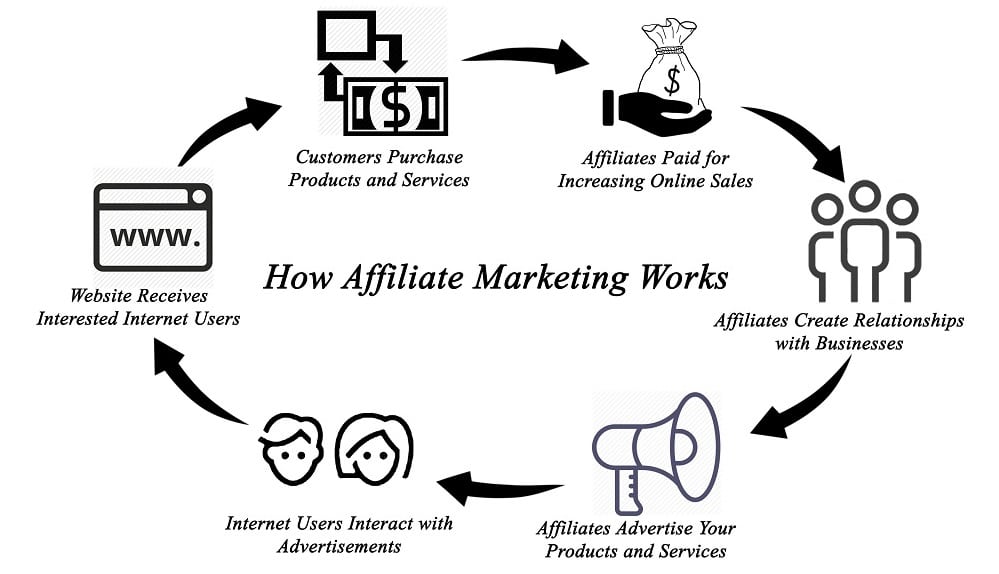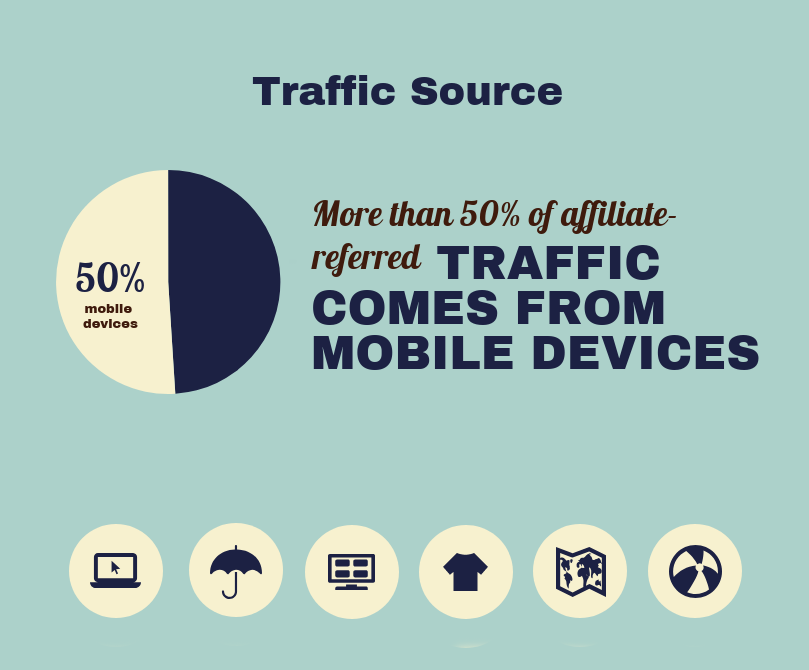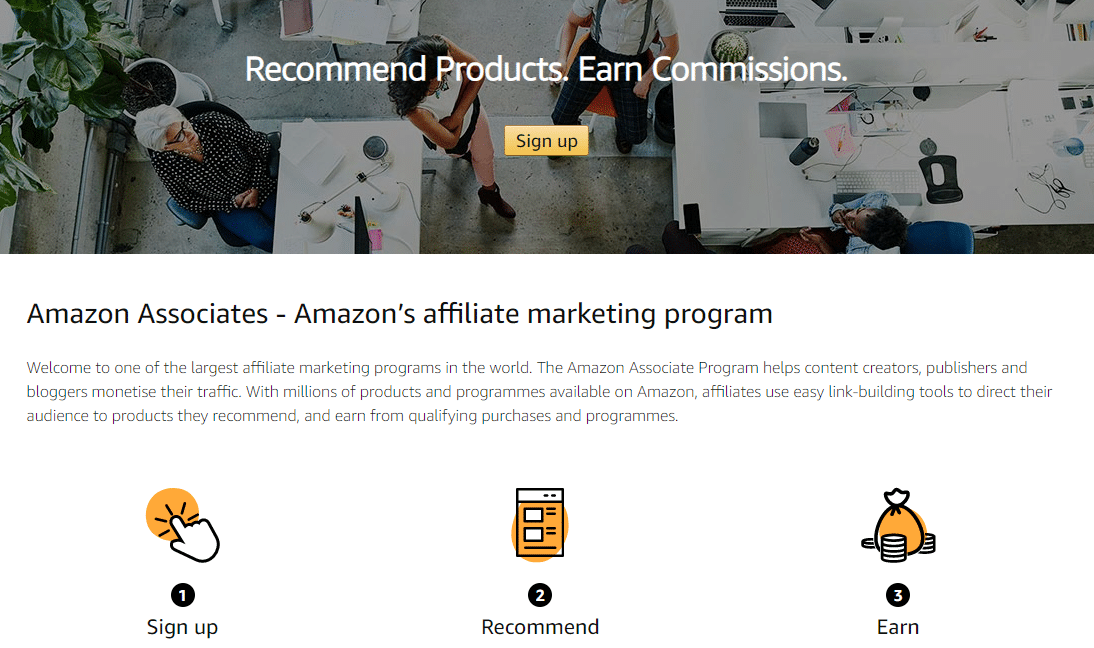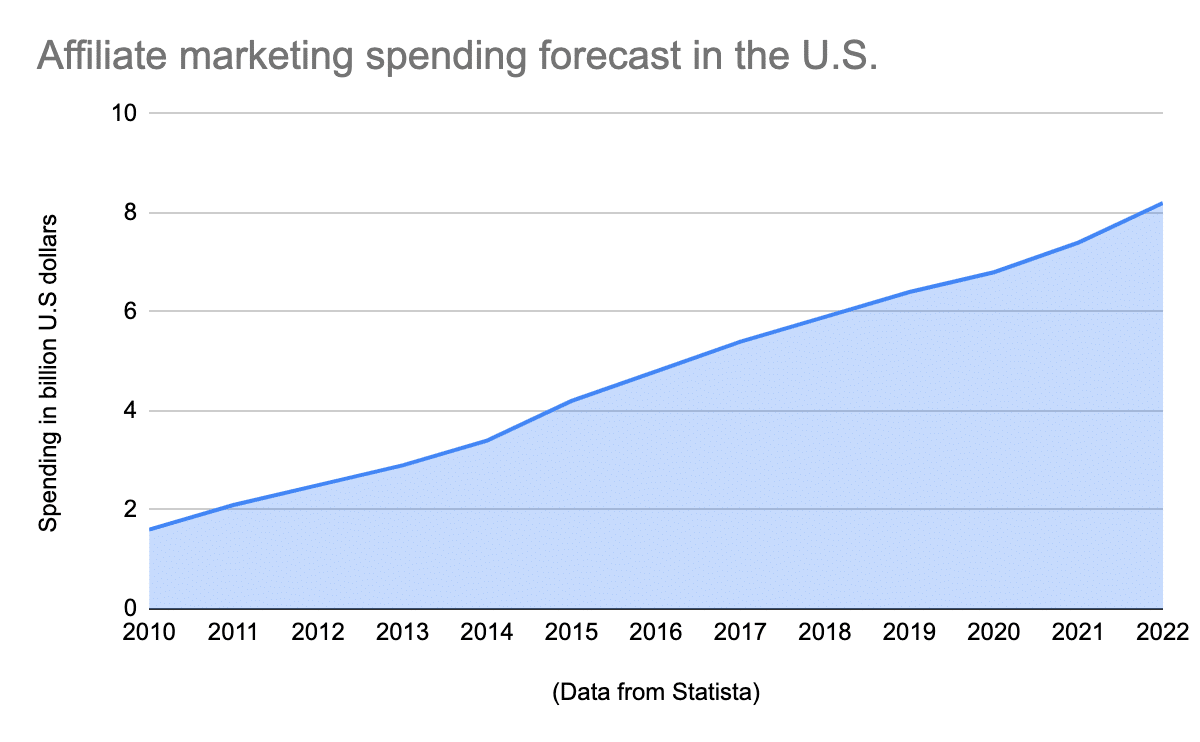If you’re running an eCommerce store, it’s likely you already have your fingers in many different marketing pies. But you may be able to stick them in one more.
Most methods of marketing depend on targeting potential or even actual customers who are looking for what you sell, like an email list. While marketing is about reaching out and engaging, it’s also vital to be agile.
Agile marketing values flexibility, collaboration, and speed above all. By being flexible and collaborating to change a plan when it’s not working, failing campaigns can be turned around. It’s like cooking – tasting as you go helps you build a better flavor.
Whether you’re a new business or want to grow beyond the same old audience, the question is this: how do you do it? By starting an affiliate program and partnering with influencers, you can promote your products to a brand new, established audience and broaden your pool of potential customers.
Learning how to start an affiliate program is the first step toward incorporating this cost-effective marketing strategy into your campaign.
What is affiliate marketing?
Affiliate marketing is a type of performance-based marketing. Affiliates get rewarded for each customer referred to a business.
For example, if your eCommerce store sells books, you may ask an influencer to promote your products and provide them with a referral link. If someone clicks on the link, they end up at your store where they can purchase from you.
You can see the customer was sent to your store via a tracking code in the referral link. This tells you the influencer converted them, and they get a commission from the sale.
With this type of marketing, you only pay an affiliate if they convert potential customers by referring them via a link or discount code. If no customers get referred, you don’t pay anything.
Is an affiliate program right for you?
An affiliate marketing program is a cost-effective way to grow your online business, whether you sell a digital product like intelligent SAP RPA or physical products like books. However, it isn’t the right model for everyone.
Affiliates get a portion of the sale when they refer a customer. If your profit margins are slim, you could end up with an unsustainable profit margin or no way to maintain your profit, risking your business.
Before you find out how to start an affiliate program, take a minute to discover if you should. Look at your profit margins and the wider industry to see if you need to make pricing adjustments and what commission you can provide.
Benefits of an affiliate program
Affiliate marketing does have benefits for your business. Consulting influencers and reviewers is a large part of purchasing products for most consumers.
An affiliate campaign, like other forms of marketing, will increase your sales, but there are a few key benefits specific to this type of marketing:
- Faster eCommerce growth
- Builds trust
- Trackable
- Pay-per-sale
- Better SEO results
Steps for starting an affiliate program
So, how do you start an affiliate program?
1. Define your goals
What do you want to accomplish? How are you going to measure it? These are the most important questions to ask before starting any marketing activity.
The first step in how to create an affiliate program is to know your objectives and KPIs (key performance indicators) so you can measure performance.
When deciding on your objectives, choose specific goals that correlate with the direction you want your business to go, such as:
- Increasing site traffic by 10 percent each month
- Increasing revenue by 20 percent or X amount of money by the end of the quarter
- Increasing average orders per day by 10 percent
- Growing your customer conversion rate
Metrics are vital in ensuring you reach your goals. You may already have them in place to monitor the progress of employees or how well your eCommerce store is doing. Some common KPIs to measure for affiliate marketing are:
- Click traffic
- Conversion rate
- Gross order
- Commission
You may want to add metrics to measure the performance of your affiliates in the same way you monitor employees or your business.
Keep your objectives and metrics focussed on the affiliate program and separate from other general metrics.
Remember, a good objective is measurable by KPIs and matches what your business is trying to achieve.

2. Decide commission rates and terms
An affiliate program is a business arrangement between you and your affiliates. In return for promoting your products and providing you with customers, affiliates want to be paid fairly for their content and contribution.
By defining an affiliate relationship, commission strategy, and establishing terms for what you will offer, you eliminate any financial issues or confusion in the future.
Commission strategy
Your commission strategy is vital to determining the success of your affiliate marketing program. As the popularity of affiliate marketers has grown, so have their earnings. A single affiliate could earn thousands each month from one business alone.
Choose a commission rate that’s too high, and you risk losing your profit. Choose one too low, and you risk discouraging affiliates.
Commission rates for eCommerce products are generally eight to 15 percent of the product price. It will depend on how much profit you make from each sale after deducting shipping, packaging, taxes, and other fees.
For example, say you’re making a profit of 20 percent per product sale. You can likely afford to give an affiliate a 10 percent commission and keep 10 percent profit for yourself.
But, if you’re only making 12 percent profit, giving your affiliate 10 percent is unsustainable if you want your business to grow.
Terms and conditions
When will your affiliates be paid? Per sale or per click? How often? Are there any content guidelines? What happens if a customer aborts a purchase?
There are lots of reasons why a customer abandons a shopping cart, but how does that affect the affiliates’ earnings?
By establishing fixed terms and defining what you’ll offer your affiliates, you eliminate confusion and misunderstanding.
It’s recommended to pay affiliates per sale as most customers won’t purchase on the first click, so you could be shelling out for sales that never happen.
Another consideration is whether you pay a commission if the customer buys a month after clicking on the affiliate link. Affiliate cookies are used to track customers, so you know if their visit is because of affiliate traffic.
Deciding to favor your affiliate might incentivize them to create more quality content about your products and increase your pool of customers as well as future partners.
Bear in mind you don’t necessarily have to pay a commission for returning customers in the future.
3. Pick an affiliate platform
The next step in how to start an affiliate program is to choose a platform. This is key to your process improvement methodology. Every business has inefficiencies holding them back. By identifying and combating these, bottlenecks to success can be eliminated, allowing for greater growth. Picking the right program to improve your processes is vital.
You can either use an established affiliate network or build an in-house program using specialist software. Depending on your budget and skills, one option may suit you better. Below are summaries of the two types of platforms to help you decide.
Affiliate networks
Affiliate networks are dedicated platforms for store owners to find affiliates to join their programs. There are many different platforms available, with a range of pricing. They have an established network of high-quality and trusted affiliates to connect with.
Each platform provides various features, including in-depth tracking and reporting. You don’t need any technical knowledge to begin, and the platform will manage the affiliate program. These options can be costly, but they require minimal effort to set up and manage long term.
In-house
For in-house affiliate programs, you have to build and manage the program yourself. This requires technical knowledge and could mean adding an affiliate manager to your team in the long term. You will also be responsible for finding and inviting potential affiliates.
It does mean you have control over the features and personalization of the system. An in-house program can be cheaper when compared to their affiliate network alternatives. You might want to research what eCommerce sites similar to yours use, even if they sell a different product.
4. Create an affiliate program resource center
You list products on your site to sell. If you didn’t, no one would know about them or buy them. In the same way, you want visitors to your website to know you’re accepting affiliates.
Creating a landing page where potential affiliates can see details of your program is an ideal way to passively attract them. Some of the basic things your landing page will need are:
- A description of the affiliates you’re looking for
- A sign-up form
- A clear description of commission structures and payout methods
- Terms and conditions
- The promotional materials and support you provide affiliates
- Contact details so they can get in touch
It may sound like a lot, but investing time in a good landing page will imbue confidence in your business, attracting affiliates.
If you’re struggling with creating a resource page, research other affiliate landing pages for similar businesses.
5. Finding affiliates
Finding the right affiliates for your store can be the toughest part of the process. If you’ve signed up for a dedicated platform, you already have a list of potentials at your fingertips. However, if you use an in-house program or are looking to expand your pool, it can take some time to build momentum.
The first step in how to find affiliates is to seek out content creators to invite to your program. Whether they’re YouTubers, bloggers, or social media influencers, you can easily see their following and content quality.
Remember not every influencer or Youtuber will be right for you, so don’t just go after accounts with a million followers. Look for the right people to promote your products. Often, they’re already creating similar content on their channels.
You may even ask previous customers who’ve lauded your products on social media to join. They will market them to their family and friends, driving up your eCommerce traffic and sales.
6. Approve affiliates
Once you have a list of applicants, it’s time to approve them. Accepting every affiliate might sound like a great idea. After all, the more people marketing your product, the longer your reach, right?
But what if you accept someone who has a bad reputation in the business community or doesn’t reach your target audience? You could be risking your brand reputation and wasting marketing resources.
Although affiliate marketing means you don’t pay out to affiliates until you make a sale, managing low-quality affiliates can spread your time thin and discourage high-quality affiliates from joining you.
When looking through the list of potential affiliates, ask questions like:
- What kind of influence do they have in your industry?
- What type and quality of content do they make?
- Do they align with your business ethos?
- What are their audience engagement rates like?
Create guidelines, an affiliate limit, or a list of criteria to help you choose the best of the bunch.
It will be necessary to update or change your criteria as time goes on and you learn more about which affiliates are best for you. Just beware of turning away quality affiliates by sticking too strictly to the limits.
7. Provide promotional materials
One of the best ways to get your affiliate marketing up and running is to provide your affiliates with essential promotional materials.
As with most influencers, they’ll likely create content to promote your products, depending on the marketing channels they use. But your materials can provide them with insight into how you want to market. It also gives them tried and tested content to engage with their audience.
Some essential materials to provide are:
- Affiliate links to ensure they get paid for referrals
- Unique coupon codes to track further progress
- High-resolution videos and photos of products
- Social media templates, banners, and posts
- Customer testimonials and reviews
- Email marketing templates and content
Regularly meeting up with your affiliates via secure video conferencing software and discussing ideas will help you further support them in promoting your products. It may even give rise to different, more successful promotional materials and marketing campaigns.
Now you know how to start an affiliate program
Affiliate programs are a great way to build relationships with influencers in your industry. In addition to promoting your products, you’re also establishing trust with target audiences.
The main aim of any business is to increase sales and generate revenue. With successful affiliate programs, those aims can be accomplished while keeping marketing costs as low as possible.
As well as being affordable and providing a great return on investment, learning how to start an affiliate program can grow your brand awareness and business reach.
Remember to refer back to your objectives and KPIs to ensure you’re moving in the right direction and keep an eye on what each affiliate partner is doing. A little encouragement can go a long way toward generating sales.







